15-day in depth tour: Sacred Mountain, Holy Lake and Circumambulating Mount Kailash
15-day in depth tour: Sacred Mountain, Holy Lake and Circumambulating Mount Kailash
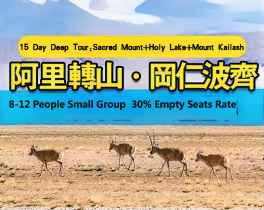
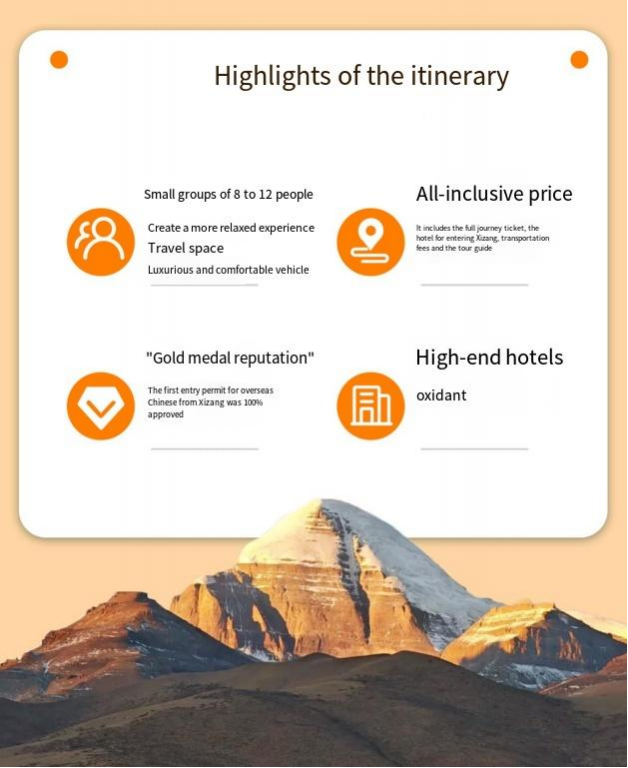
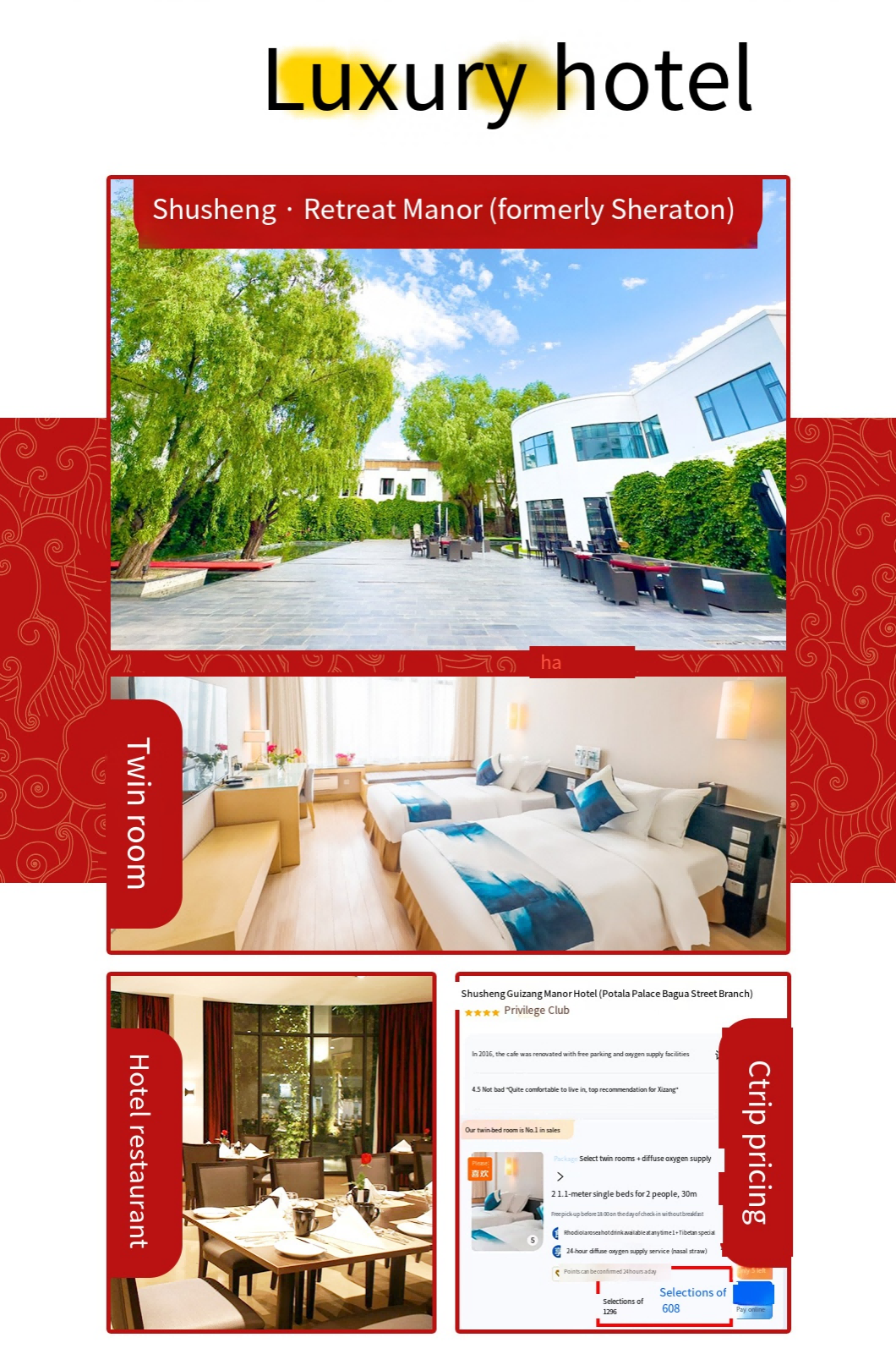
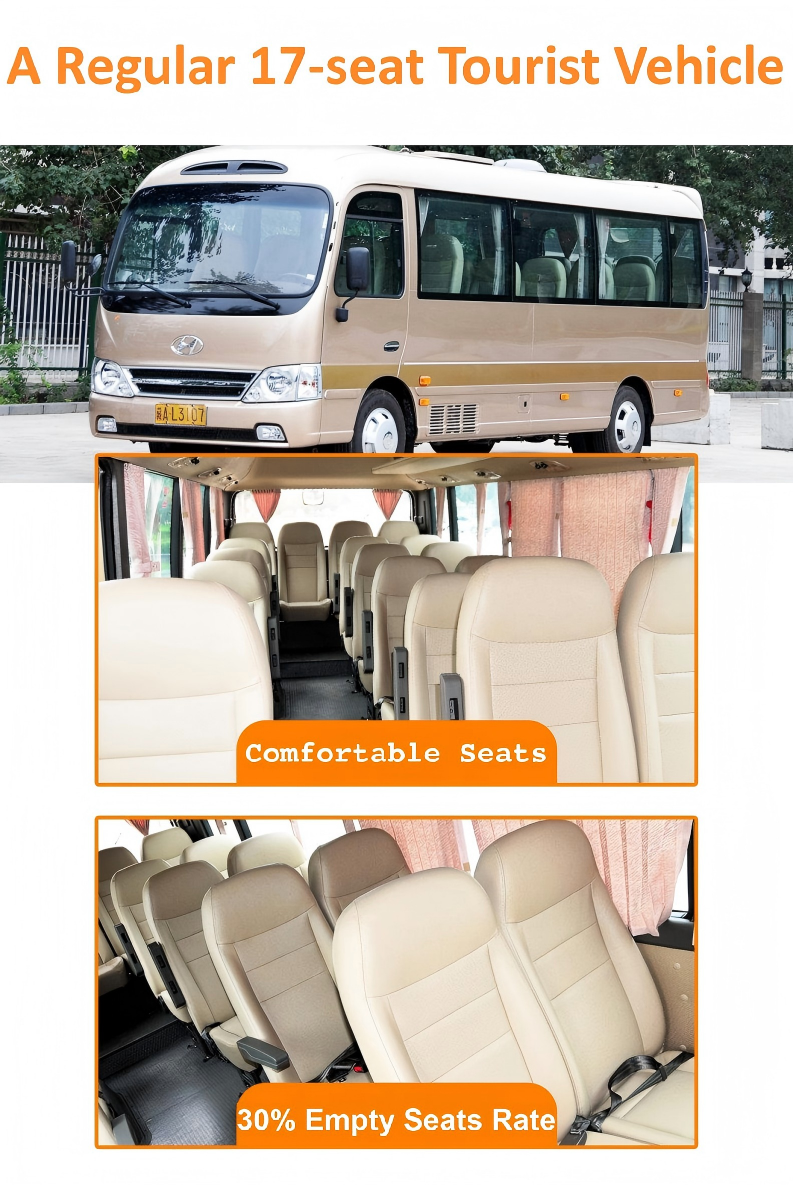
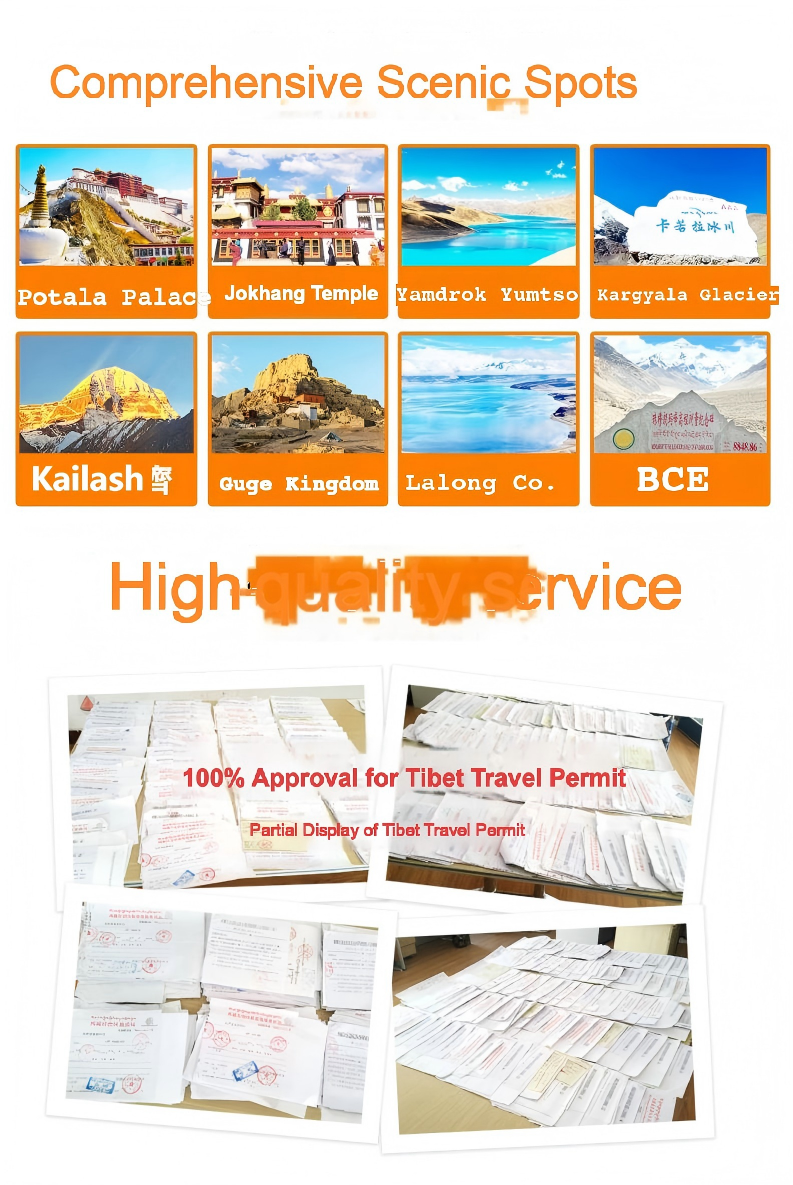
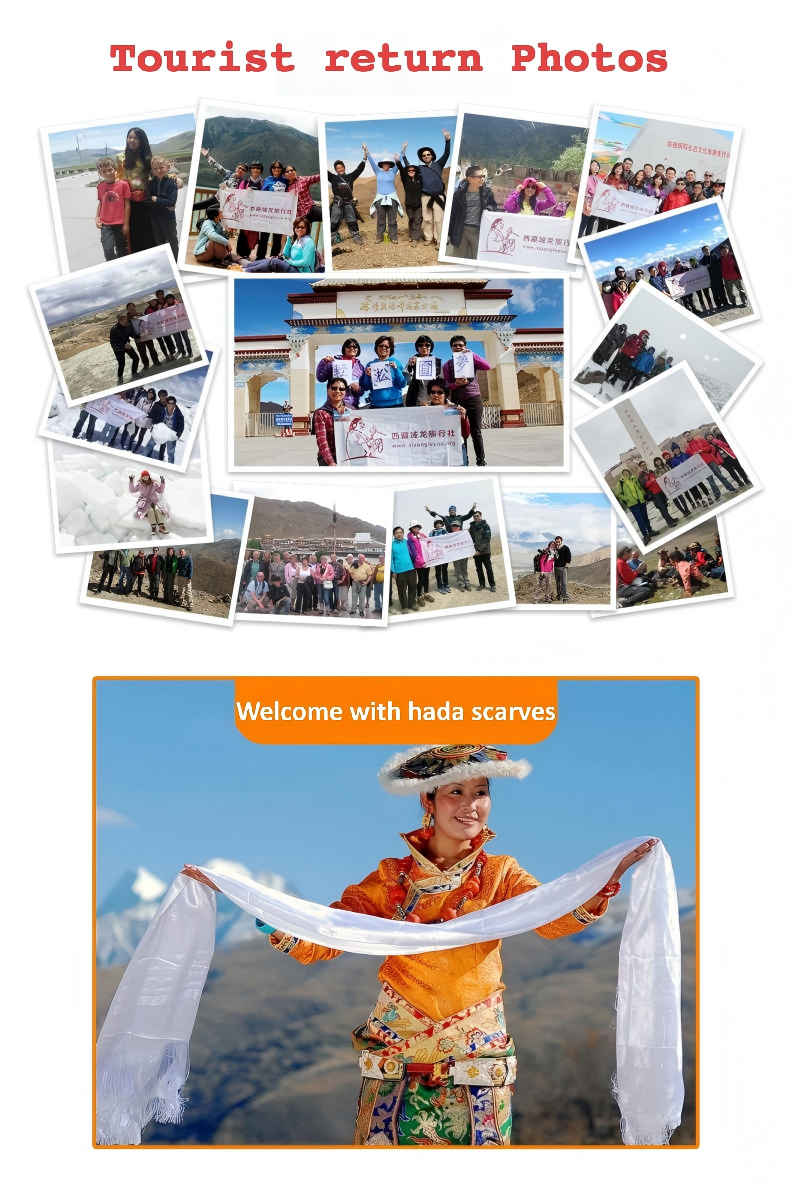
No Ali, No Tibet: 15 days of Circumambulation of Mount Kailash in Ali
Briefly Itinerary:
| Time | Itinerary | Attractions Arrangement | Accommodation |
| D1 | Arrive in Lhasa | Our agency arranges pick-up - check-in at the hotel | Lhasa Excellent Hotel/Oxygen Room of the same level |
| D2 | Lhasa | City tour: Potala Palace, Jokhang Temple, Barkhor Street | Lhasa Excellent Hotel/Oxygen Room of the same level |
 | |||
| D3 | Lhasa - Shigatse | Lhasa - Yamdrok Lake - Karola Glacier - Shigatse | Wangrun Hotel Shigatse/Same- level oxygen supplyroom |
| D4 | Mount Everest Base Camp | Shigatse- Jiaula Pass - Mount Everest Base Camp | Double standard room withoxygen supply at a foreign-related hotel of the same grade in Basong Village |
 | |||
| D5 | Saga | Basong Village - Dingri - Xixabangma Reserve - Peiku Cuo - Saga | Oxygen supply from foreign- related hotels of t he samegrade in SagaDouble Standard room |
| D6 | Tarchin | Saga-zhongba-maquan River Wetland Park - Tarchin | Double standard rooms with oxygen supply at international hotels of t he same level inTarchin |
| D7 | Day 1 of the circumambulation | Tarchin-zhire Monastery (about 20km: 6km by car + 14km on foot) | Zhirei Temple bed |
| D8 | Day 2 of the circumambulation | Zhirei Temple - Zuchu Temple (about 20km: full hike) | Zunzhu Temple bed |
| D9 | Day 3 of thecircumambulation | Zuchu Monastery - Tarchin - ZadaCounty (about11km: 7km on foot + 4km by car) | A standard room of the same class as the Zada Earth Forest CastleOxygenated |
| D10 | Zada County- Tarchin | Guge Dynasty - Zada Tulin - Tarchin | Double standard room withoxygen supply at international hotel of the same level inTachin |
| D11 | Tarchin-Saga | Tarchin - A distant view of the sacred mountain and lake - Saga | Double room with oxygen supply at the same level of international hotel in Saga |
| D12 | Saga-Shigatse | Saga - A distant view of Peku Cuo - Shigatse | Wangrun Hotel Shigatse/Same- level Oxygen room |
| D13 | One measure after another | Shigatse - Jiegangri Mountain - Selin Co - Bangor | Lianyi Grand Hotel/Equivalent |
| D14 | Bangor - Lhasa | Bangor - South Shore of Namtso (Zaxi Peninsula) - Nagela Pass - Nyenchen Tanglha Mountains - Lhasa | Lhasa Excellent Hotel/Oxygen Room of the same Class |
| D15 | Airport drop-off | Lhasa airport drop-off - End of the trip | / |
| Quote | April-May: 13,980 yuan per person; (RMB) June / October: 14,980 yuan per person; (RMB) July-september: 15,980 yuan per person; (RMB) (National Day: 10.1-10.5; Sagadawa: 5.25-6.05; based on July-September) |
| The quote includes | Vehicle: Travel vehicle throughout Tibet, 15-17 seats, guaranteed one seat per person; Accommodation: Two people per standard room throughout the journey, oxygen supply from hotels in Lhasa and Rikaze; In Ngari Prefecture, twopeople per standard room. Some hotels do not include breakfast. Admission: Tickets for all attractions + sightseeing bus;Potala Palace, Jokhang Temple, Yamdrok Yumtso, Karola Glacier,Tashilhunpo Monastery, Mount Everest, Mount Everest Sightseeing Bus, Entrance fee, Mount Kailash, Lake Manasarovar, Guge Dynasty andsightseeing Bus, Zanda Earth Forest, Namtso Tour guide: Outstanding certified Chinese/English tour guide. Documents: Tibet Entry Permit, Border Pass. Insurance: Travel agency Liability insurance, vehicle seat insurance, travel accident insurance (all three insurances complete). |
| Quotation not included | 1、 International and domestic air and train fares; If you need to book on your behalf, the cost will be at your own expense; 2、 Meals are not included; 3、Other self-paid Tours throughout the journey are not included (e.g., off-road vehicle tour around the lake, mountain c ircumambulation pack, pick- up and drop-off vehicle) .4、 Driver and guide tips are voluntarily paid by guests based on service. |
| Complimentary | Welcome Hada pick-up atthe station/airport 1 mineral water per person per day, 1 small bottle of portable oxygen perperson1 0 L o x y g e n t a n k - p l a c e d i n t h e v e h i c l e ( 1 0 L a t y o u r o w n e x p e n s e ) |
| Detailed itinerary | |||||||
| D1 | Upon arrival in Lhasa, our agency will pick you up at the Hada station and check in at the hotel | ||||||
| Breakfast: At your own expense | Lunch: At yourown expense | Dinner: At yourown expense | Lhasa ExcellentHotel/Oxygen Room of the same class | ||||
| Tourists can choose the flight suggested by the travel agency and purchase their own air tickets to Lhasa.They should gather in Lhasa on that day. Tour guides and drivers pick up tourists at Lhasa Airport. Then take a ride along the Lhasa River Scenic Belt to Lhasa city to experience the pure air of the plateau. After arriving in Lhasa, check into the hotel booked by the travel agency. Try to avoid going out after arriving in Lhasa and have a good rest to adapt to altitude sickness. If you are in good health, you can visit the Potala Palace at night. 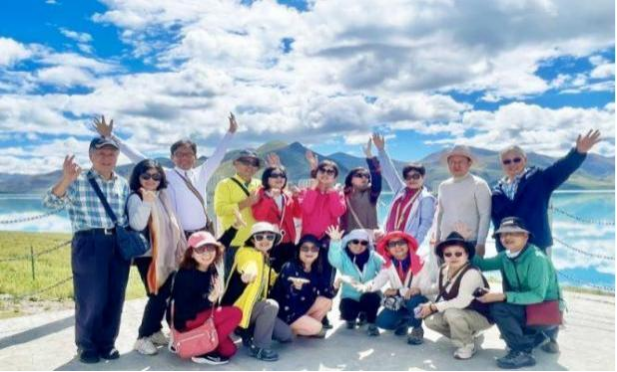 | |||||||
| D2 | Lhasa City Tour: Potala Palace, Jokhang Temple, Barkhor Street | ||||||
| Breakfast: Breakfast included at the hotel | Lunch: At yourown expense | Dinner: At yourown expense | Lhasa Excellent Hotel/Oxygen Room of the same class | ||||
| Car: 0.5h, KM:20, altitude: 3,700meter In the morning, visit the Potala Palace, the world's highest ancient palace-fortress complex, the residence of successive Dalai Lamas and the center of political and religious power in Tibet; It houses gold stupascontaining the true figures of successive Dalai Lamas and a large number of precious murals, Thangkas and Buddha statues, which are a concentrated representation of Tibetan culture.After lunch, visit the Jokhang Temple, the earliest Buddhist temple built during the Tubo Dynasty, where there is a life-sized statue of Sakyamuni at the age of twelve that accompanied Princess Wencheng into Tibet. It is the most sacred and effective Buddha statue in the hearts of t he Tibetan people. Here, visitors can not only see the piety of the people in their worship, but also walk around the octagonal street with the people to pray for all living beings. | |||||||
After lunch, visit the Jokhang Temple, the earliest Buddhist temple built during the Tubo Dynasty, where there is a 12-year statue of Sakyamuni that accompanied Princess Wencheng into Tibet. It is the most sacred and effective Buddha statue in the hearts of t he Tibetan people. Here, visitors can not only see the piety of the people in their worship, but also pray for all living beings by walking around the octagonal street with the people.Note: When entering a monastery in Tibet, remember to take off your hat, remove your sunglasses, do not smoke, touch the Buddha statue, read scriptures, and beat bells and drums. For other Buddhist objects such as prayer beads and amulets, do not touch them casually. Some temples do not allow photography, and these rules must be followed.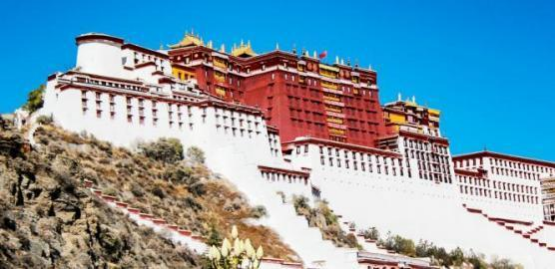 | ||||
| D3 | Lhasa - Yamdrok Yumtso - Karola Glacier - Shigatse | |||
| Breakfast: Breakfast included at the hotel | Lunch: At yourown expense | Dinner: At yourown expense | Shigatse Wangrun Hotel/Oxygen Room of the same class | |
We set off from Lhasa in the morning and drove to Yamd rok Yumtso, one of the three sacred lakes inTibet, which is known for its dazzling and ever-changing colors. Yamdrok Yumtso, the highest freshwater lake in the world, is 4,441 meters above sea level; "Jade Lake" in Tibetan, then descend to get up close and personal with Yamdrok Yumtso. The azure lake water blends with the distant snow-capped mountains, along with the various mountain ranges on both sides, the distinctive Tibetan villages, and the cattle and sheepeverywhere. The journey is refreshing and delightful.In the afternoon, I passed by the distant view of the Karola Glacier: to feel its grandeur, misty beauty, the glacier is a geological history written by flowing years and ice and snow, a great work of art sculpted by time. Then head to Shigaste for accommodation. 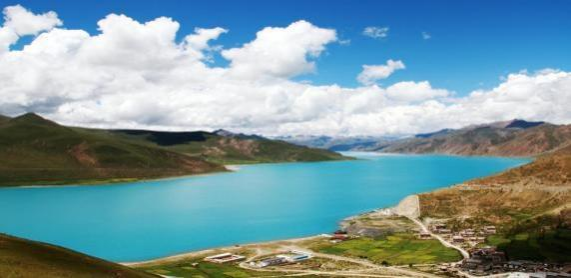 | ||||
| D4 | Xigaze - Dingri - Everest Base Camp - Basong Village | |||
| Breakfast:included at the hotel | Lunch: At yourown expense | Dinner: At yourown expense | Double standard room with oxygen supply at a hotel of the same level in Basong Village | |
Take the bus in the morning via Lazi to Xindinggri County - Xiegeer. Along the way, you will cross the 5,220-meter-high Gyatso Mountain, and when you are approaching Xiegeer, you will be able to see the majestic Mount Everest. You will cross the 5,220-meter-high Gyatso pass along the way, make a brief stop and head to Dingri. Arrive at the world's highest Mount Everest Nature Reserve in the afternoon. Looking south from Rongbu Monastery, the world's highest monastery, is recognized as the best spot to look up at Mount Everest. At 5,100 meters, the temple stands with its white pagoda and colorful prayer flags fluttering. Take an eco-friendly vehicle to the base camp of Mount Everest at 5,200 meters, where you will dance with the world's highest peak, Mount Everest. 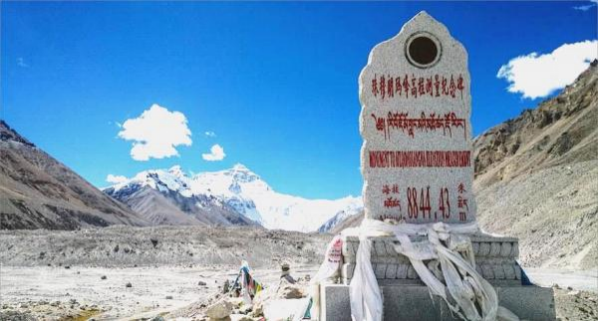 | ||||
| D5 | Basong Village - Dingri - Xixabangma Reserve - Peiku Cuo - Saga | |||
| Breakfast: At your own expense | Lunch: At yourown expense | Dinner: At yourown expense | Double standard room with oxygen supply in Saga International Hotel of the same level | |
| After breakfast, take a ride to Mount Everest and continue to enjoy the scenery surrounded bymountains, passing by a roadside plateau lake, Peguco, and look out at the 8,013-meter-high Xishapangmapeak (Tibetan: Xishapangma, meaning "harsh climate", formerly known as High Monk Zan Peak, located inNyalam County, Tibet Autonomous Region).Enter the vast uninhabited area of Sagar. 【 Saga 】 is located in the northwest of the Xigaze region. The county border is 105 kilometers long. National Highway 2 1 9 runs through the entire territory, from which to Xigaze and Lhasa in the east, to Ali and Purang in the west, and to JilongCounty and the Kingdom of Nepal in the south. Saga is located on the northern foot of the Himalayas and onthe southwestern edge south of the Gangdise Mountains, on the upper reaches of the Yarlung Zangbo River. There are sacred mountains, sacred lakes, vast grasslands and herds of yaks within the territory. The average altitude of the county is over 4,600 meters. It has a typical continental plateau climate, which is extremely cold and harsh, with long winters and short summers, thin air, abundant sunshine and a large temperaturedifference between day and night. 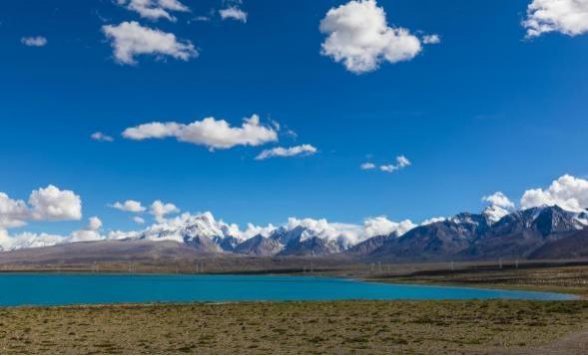 | ||||
| D6 | Saga-zhongba-mahequan Wetland Park - Tarchin | |||
| Breakfast: At your own expense | Lunch: atyour ownexpense | Dinner: Atyour own expense | Double standard room with oxygen supply at the same internationalhotel in Tachin | |
| After breakfast, follow the 219 National Road through the town of Payang, which belongs to Zhongba County, a town with a strong western charm and the highest town in the world at 4,700 meters above sea level. Along the way, enjoy the Maquan River Basin, gradually enter the embrace of Mount Kailash and Lake Manasarovar, and head to the ghost lake La Amco. Stay overnight in Tachin. 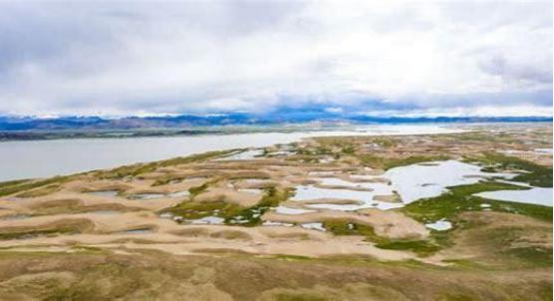 | ||||
| D7 | Day 1 of the Circumambulation: Tarchin - Zhirui Monastery (about 20km: 6km by car + 14km on foot) | |||
| Breakfast: At your own expense | Lunch: At yourown expense | Dinner: At yourown expense | Accommodation: Bed at Zhire Temple | |
| Early in the morning, board the eco-friendly bus and set off from Tachin, going deep into the valley to prepare for a hike around the mountain. There are yaks and horses in the valley for people to experience, and there are also baggage handlers to facilitate guests with largeluggage. (Note: This tour fee does not include horseback riding, yak riding and baggagehandling.) Adjust your breathing, get ready, and measure this pure land with your feet. As you ascend the valley, blue skies and snow-capped mountains follow you all the way, andoccasionally a river meanders through you to experience the wonders of nature in the most authentic way.Along the way, you will also see the west and north sides of Mount Kailash. One sidesoars into the clouds, while the other is layered and endless. In the meandering journey, there is a wonderful encounter with a mountain peak, a taste of the unique and diverse views, and a deep experience. After about 22 kilometers of c ircumambulation, you will arrive at Z hiraiMonastery, where you will rest and fall asleep in the midst of the colorful prayer flags, with devotion to faith and reverence for nature. 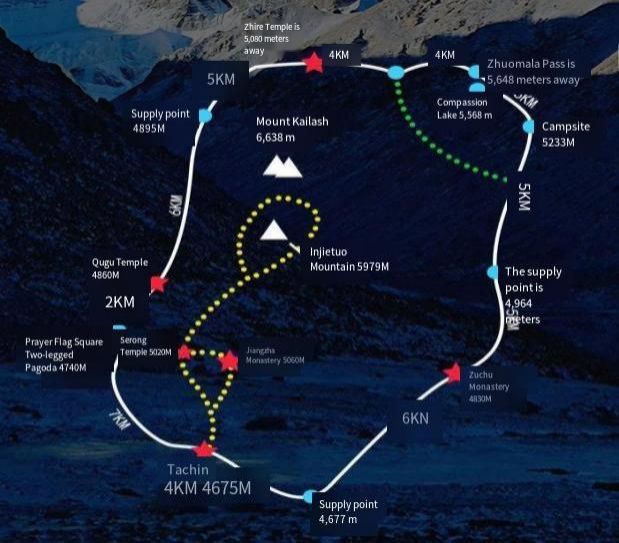 | ||||
| D8 | Day 2 of the circumambulation: Zhirui Monastery - Zuchu Monastery (about20km: full hiking) | |||
| Breakfast: Atyour own expense | Lunch: At your own expense | Dinner: At your own expense | Accommodation: Bed at Zunju Temple | |
| After a night's rest and replenishing my energy, I started a new day of hiking.Today we will cross the highest point of this circumambulation, the Zhuomala Pass (5,630 meters). Along the way, we will encounter many devout Tibetans prostrating themselves. The snow-covered road is somewhat slippery, and the rocks rolling into the valley make a hissing sound. The walk is somewhat difficult. The so-called roundabout path is actually the footprints of the Tibetan people walking through the ice, snow and rubble with their bodies and feet, the accumulation of time.The path to the sacred is a bit difficult to walk, and it is advisable to take a break at the teahouse at the right time to regain one's strength. 【 Zhu omala Pass 】 colorful prayer flags flutter in the breeze, and below the valley there is a beautiful little lake, 【 Toji Co 】 , a lake of mercy, like a transparent white jade set among the majestic mountains. After passing the Zhuomala Pass, the descent begins, and it will consume much less energy. Walk around the mountain all the way back to Zhirre Monastery and spend the night at the [Zuchu Monastery] guesthouse. 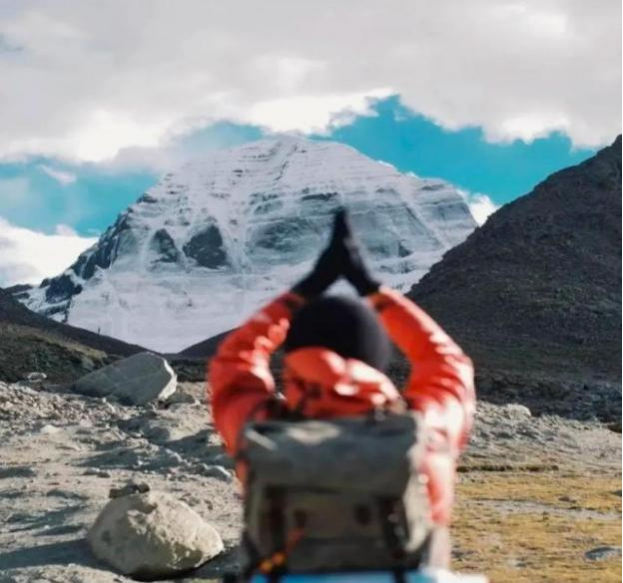 | ||||
| D9 | Day 3 of the Circumambulation: Zuchu Monastery - Tarchin - Zada County(about 11km: 7km on foot + 4km by car) | |||
| Breakfast: At your ownexpense | Lunch: At your own expense | Dinner: At your own expense | Zada Earth Forest Castle/ClassStandard Room oxygenated | |
| On the third day of the circumambulation, as the altitude decreases, the surrounding color gradually changes from snow-white to emerald green, and the small animals among the shrubs become lively, full of vitality. Piles of mani stones, in a riot of colors, were piled up among the snow-capped mountains and meadows, like monks praying with their hearts. After completing the last 10 kilometers of hiking, it was noon and our tour bus was already here to welcome friends who had completed the circumambulation, then we drove to Zanda. 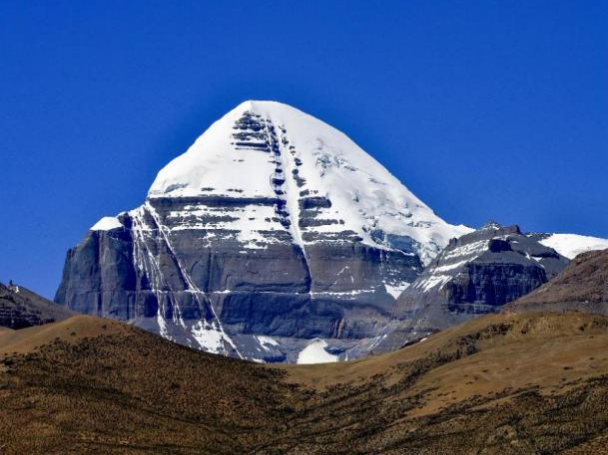 | ||||
| D10 | Zada County - Zada Earth Forest - Guge Dynasty - Tarchin | |||
| Breakfast: At your own expense | Lunch: Atyour ownexpense | Dinner: At yourown expense | Double standard room with oxygen supply at the same international hotel in Tachin | |
The ruins of the Guge Kingdom are a highland ancient city. The ruins of the Guge Kingdom are located on a mound by the Xiangquan River in the Zada Feizhabuyang district of Ali, covering an area of about 180,000square meters. The entire ruins have more than 3 0 0 houses and caves, three pagodas (more than 10 meters high), four temples, two halls and two underground passages. The site is divided into three levels: the royal palace, the temple and the residential house. A city wall was built around it, with borons at the four corners. There are many fine carvings and murals in its Red Temple, White Temple and Reincarnation Temple.The Guge Kingdom was established around the 10th century by Jide Nima Gon, the great-grandson of the last king of the Tubo Dynasty, Zamprangdama, who fled to Ali with his followers after the collapse of the dynasty. From the middle of the 10th century to the early 17th century, the Guge Kingdom dominatedwestern Tibet, promoted Buddhism, resisted foreign aggression, and played an important role on the historical stage of Tibet after the Tubo Dynasty. The disappearance of the Guge Kingdom, which had a splendid civilization of seven hundred years, remains a mystery to this day. 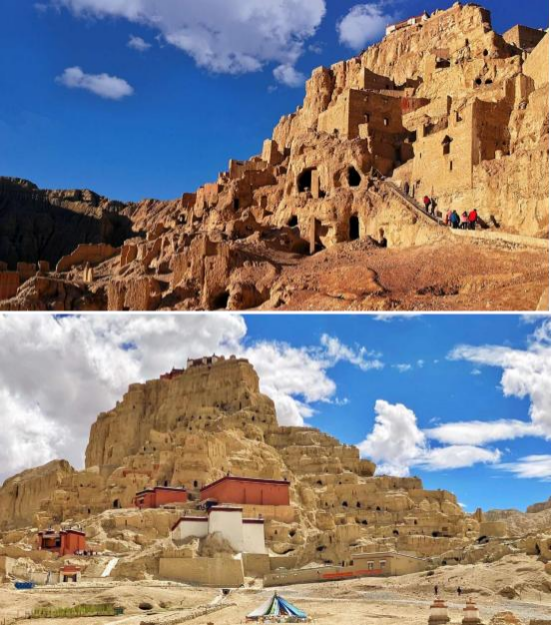 | ||||
| D11 | Tarchin - a distant view of the sacred mountain and lake - Saga | |||
| Breakfast: Pleasearrange it at your own expense | Lunch: At your own expense | Dinner: At your own expense | Double standard room withoxygen supply in SagaInternational Hotel of the same level | |
| Set off from Tarchen in the morning, facing the dawn between Mount Kailash and Mount Namunani, and head to Sagar, passing by Lake Manasarovar, known as "Mother of Rivers in the world" and also called Mafamu Lake. In Tibetan, it means "unbeatable lake" and is located in Purang County, Tibet, China.The surrounding natural scenery is very beautiful. Since ancient times, Buddhistsand Benites have regarded it as a sacred "center of the world". It is the most transparent freshwater lake in China and one of the three "sacred lakes " called by Tibet Development. It is also the source of four major rivers in Asia. The sacred mountains and lakes are surrounded by numerous temples of various denominations and ancient sites, with an average altitude of 4,500meters. 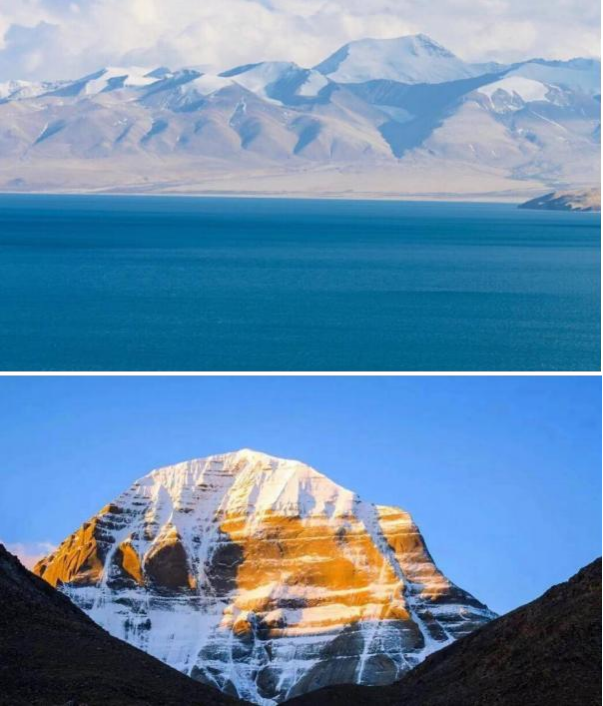 | ||||
Gongzhu Co, the first plateau lake in the Ngari region from Tibet via the Ngari Southern Route, has an altitude of 4,786 meters and an average annual temperature of only 0-2 degrees Celsius, with excellent scenery. Then return to Sagar for accommodation.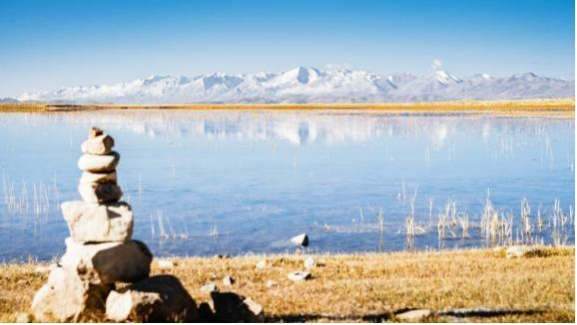 | ||||
| D12 | Sagag - a distant view of Peku Cuo -Shigatse | |||
| Breakfast: At your own expense | Lunch: At your own expense | Dinner: At your own expense | Shigatse WangrunHotel/Oxygen Room of the same class | |
| Departing from Saga today, passing through Pegu Co.Peku Co is the largest inland lake in the Mount Everest Reserve, covering an area of about 300 squarekilometers and reaching an altitude of 4,590 meters. [1] The lake is surrounded by mountains on three sides, has an open terrain, and is rich in fish resources. Wild horses, Tibetan wild donkeys, Tibetan antelopes, cranes, yellow ducks, grey ducks, etc. are active along the lake shore.Compared with Namtso Lake, Manasarovar Lake, Selin Lake and Yamd rok Yumtso Lake, Peku Lake is really not very famous. Fortunately, with the reflection of Mount Shishapangma (60 kilometers to the south) and thesound of the Yarlung Zangbo River (40 kilometers to the north), this gourd-shaped lake, which represents | ||||
auspiciousness, has a reason to be moved and to stay.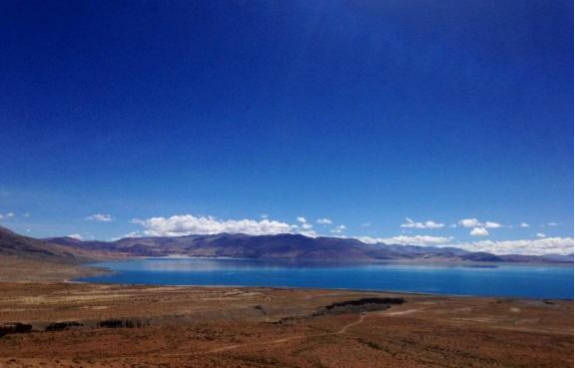 | ||||
| D13 | Step by step: Shigatse - Jiegangri Mountain - Selin Co - Bangor | |||
| Breakfast: Atyour own expense | Lunch: At your own expense | Dinner: At your own expense | Lianyi Hotel/Peer | |
| Jegangri Mountain, located in Tibet, is a natural beauty and a sacred place of Tibetan Buddhism. It is magnificent and imposing, presenting a different appearance with the change of seasons. Countless believers come to worship, believing that the sacred mountain contains boundless power and wisdom. The sacred mountain is not only a masterpiece of nature, but also a symbol of Tibetan culture. 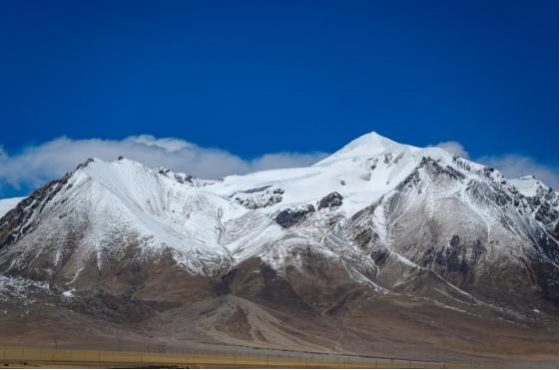 Selin Co, formerly known as Qilin Lake and Selin Dongco, is located in Shuanghu County, Shenza County and Bangor County of Nagqu City, Tibet Autonomous Region. The center of the lake is located at 30 ° N. 03'22" to 33. 19'49", 87 e. 23'40" to 92. 13'49". The lake is about 4,530 meters above sea level and has a total area of 2,099.13 square kilometers. The lake is about 72 kilometers long from east to west and 22.8 kilometers widefrom north to south. It is the second largest saltwater lake in China after Qinghai Lake and the largest lake in Tibet.Selin Co, which means "the devil's lake that reflects the light" in Tibetan, is a tectonic lake formed during the formation of the Qinghai-Tibet Plateau and is a large deep-water lake. The main rivers flowing into the lake are the Gengen Zangbo, Zaga Zangbo, Boqu Zangbo and Ali Zangbo. Around Selin Co, there are more than 20 satellite lakes such as Ge Ren Co, Wu Ru Co and Co E, which form an inland lake group.The inland area of Selin Co is surrounded by mountains on all sides, and the lake basin is flat and open. It isone of the important livestock bases in northern Tibet and is part of the Shenzha Wetland Nature Reserve,which protects black-necked cranes and ecosystems. The lakeside grassland is home to rare birds such as black-necked cranes, bar-headed geese, brown-headed gulls and mallards, as well as mammals such as Tibetan antelopes, Tibetan gazelles, wild donkeys, argali and snow leopards.The ecological environment of Selin Co is rich and diverse. The basin belongs to the plateau frigid semi-arid monsoon climate zone, with strong solar radiation, long hours of sunshine, cold in winter and spring, cool in summer and autumn, and distinct dry and wet seasons. There are numerous rivers and lakes in the basin that are interconnected, forming a closed inland lake group. 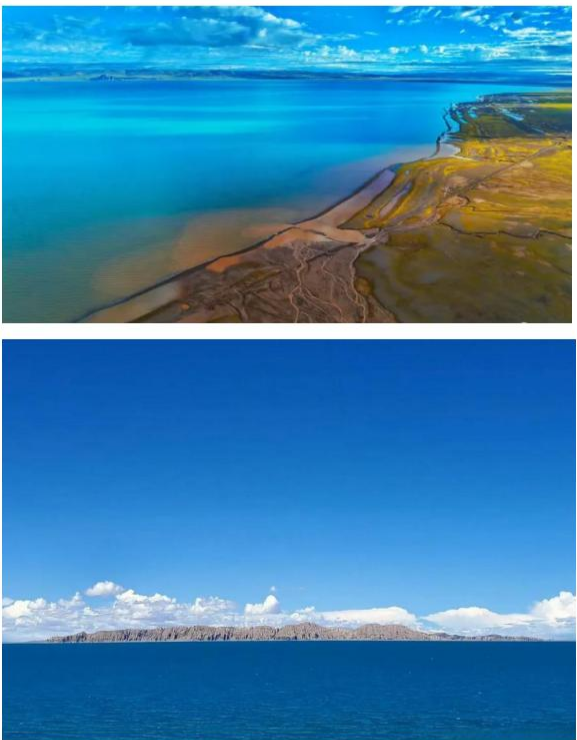 | ||||
| D14 | Bangor - South shore of Namtso (Zaxi Peninsula) - Nalagan Pass - Nyenchen Tanglha Mountains - Lhasa | |||
| Breakfast: At your ownexpense | Lunch: At your own expense | Dinner: At your own expense | Lhasa ExcellentHotel/Oxygen Room of the same class | |
After breakfast, we entered Namtso Lake from Bangor. Namtso Lake islocated in the central part of the Tibet Autonomous Region. It i s the second largest lake in Tibet and the third largest saltwater lake in China. At analtitude of 4,725 meters, it is known as the "Heavenly Lake" and is one of the "Three Sacred lakes" in Tibet. On the way back to Lhasa after visiting Namtso, we pass through the Nagenla Pass, and to the north of the Nagenla Pass is the background of Namtso. Nyenchen Tanglha, the main peak of the Nyenchen Tanglha mountains, is 7,111 meters high and is covered with snow all year round. InTibetan folk songs and legends, Nyenchen Tanglha and Namtso are inseparable lovers. Finally return to the city of Lhasa. 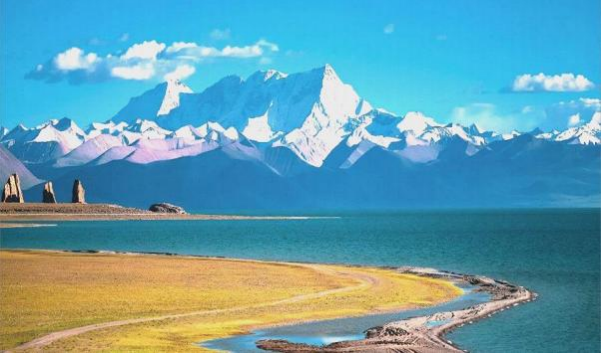 | ||||
| D15 | Lhasa - Return flight drop-off Tibet Tour Concluded | |||
| Breakfast:Breakfastincluded at the hotel | Lunch: At your own expense | Dinner: At your own expense | Accommodation : Cozy home | |
Car: 1h, KM: Airport 60, railway station 15 A pleasant trip to Tibet is over and the hotel includes breakfast in the morning. Our agency will send guests to the airport or railway station based on their return train or air ticket, and they will return to their cozy home. | ||||
Friendly tips
1. The departure time during the tour is usually around 6:30–8:00 a.m. (adjusted
earlier or later depending on the journey time of the day). The tour guide
will contact you one day before departure. Please make sure your mobile phone is turned on.
2. Before July, it usually gets dark around 20:00 in Tibet. It is recommended not to wander outside after nightfall. Please go to bed early.
3. The starting fare for a taxi in Lhasa is 10 yuan. You can share a ride. It usually costs 10 yuan to get there by car within the city.
4. In areas where the journey takes a long time by car, you can carry some snacks, fruits, chocolates, etc. with you.
5. There are more dining options in Lhasa than in the region. Local cuisine mainly consists of Tibetan and Sichuan dishes. There are more restaurants near Sun
Island, the entrance of Jokhang Temple and Balku Road, and you can choose your own.
6 Tibet has strong ultraviolet rays. Please bring your own sunglasses, lip balm, hat, sunscreen, etc. to avoid sunburn.
7. There is a large temperature difference between day and night in Tibet. When entering Tibet and during the morning and evening in Tibet, please wear/bring down jackets or down jackets that can be taken, long and short sleeved tops or thin sweaters for the upper body, long and long skirts for the lower body, and long and short sleeved top s and long trousers for entering the Putra Palace or other temples.
8. Due to the lower oxygen content in Tibet compared to the inland areas, please
rest more and drink plenty of water (or beverages such as butter tea, sweet tea, and yogurt) before and after entering Tibet, which can effectively prevent
altitude sickness.
9. The peak season is the rainy season in Tibet. It usually rains more frequently at night and less during the day. Please carry an umbrella or raincoat if it is convenient for you.
10. Our agency reserves the right to adjust the itinerary sequence based on the special circumstances of traveling to Tibet. We hope you will understand.
11. In the event of force majeure factors (weather, road conditions, mudslides,
landslides, temporary traffic control or political factors, etc.), our society
will cooperate to handle the situation, but any additional expenses incurred due to possible changes in the itinerary shall be borne by the guests.
12. If a guest withdraws from the tour due to personal reasons or altitude
sickness, only the accommodation and entrance fees that have not been incurred will be refunded.
Notes
1. Good mental quality is the panacea for overcoming and defeating altitude
sickness. A large number of examples show that maintaining an open and optimistic mood can reduce the physical discomfort caused by altitude sickness. Take care not to catch a cold before going to Tibet.
2 Keep an open and optimistic mood. Drinking butter tea, dairy products,
chocolate and beef jerky in moderation during the journey can enhance your adaptability to the plateau climate.
3. Tibetis a minority area. Please respect the local customs and habits.
Especially in religious places, respect their beliefs and do not violate the relevant taboos in your behavior.
4. Tourism reception conditions in Tibet are limited, and accommodation, dining and scenic spot conditions are relatively backward compared to
developed tourist areas. It is hoped that tourists will treat them with tolerance so as not to affect their interest in traveling.
5. People with severe high blood pressure or heart disease should not go to Tibet. Please do not bring a severe cold into Tibet.
6. When you first arrive at the plateau, drink plenty of water, eat plenty of fruits, refrain from smoking and drinking alcohol, do not walk fast, and do not run. It is best to spend half a day completely resting. Go to bed early and get plenty of sleep on the first night. This rule should start when you get off the plane. Many people get off the plane and think they don't have any altitude sickness. As a result, the symptoms only show up in the evening and it's too late to regret.
7 Don't use coins when giving alms to beggars on the road, and don't use
coins when donating in temples either. When you come across a child asking for money on the road, if you give one, a group will gather around. Keep an eye on valuable items on Barkhor Street.
Notice of Departure
Tibet is different from other regions due to its special areas such as the plateau and politics. We hereby inform you:
1. Regarding prices: Independent Tours have different prices, just like booking air tickets. Before departure, please shop around. Once the tour is booked, our agency will not accept any price objections.
2. Regarding self-funded shopping: Our agency firmly opposes tour guides' private recommendations of shopping stores and self-funded scenic spots.
If you encounter a tour guide who privately uses covert means to recommend self-funded or self-funded shopping, you can refuse and contact us. If you voluntarily participate in shopping and pay for your own expenses, you cannot file a complaint against the travel agency on this.
3. Regarding hotels: The plateau conditions are harsh. Our agency arranges foreign-related hotels as stipulated in the contract. Hotels may have no air conditioning, no elevators, and no 24–hour hot water (solar energy is used in Tibet. Hot water supply is good during the day and may not be available in the middle of the night). Please understand. If you have any special accommodation requirements, please inform us in advance.
4. Regarding vehicles: Our agency will use regular tourist vehicles for Tours. Due to the special climate conditions in Tibet, the vehicles will not have air conditioning on.
5. Regarding departure time: Due to geographical conditions, speed limits, etc., the departure time for independent Tours in Tibet is generally around 7 a.m., and the departure time varies from 6 p.m. to 10 p.m.
6. Regarding customer service: Our agency offers one-on-one VIP service with customer service tracking throughout the journey to ensure the quality of the tour.


Contact us now
Don't be afraid of
disturbing
start your soul-stirring pilgrimage

